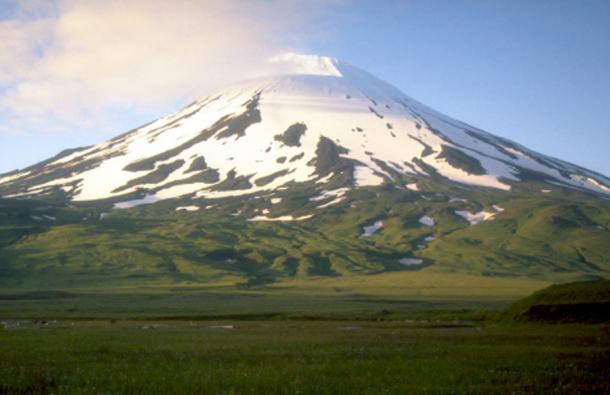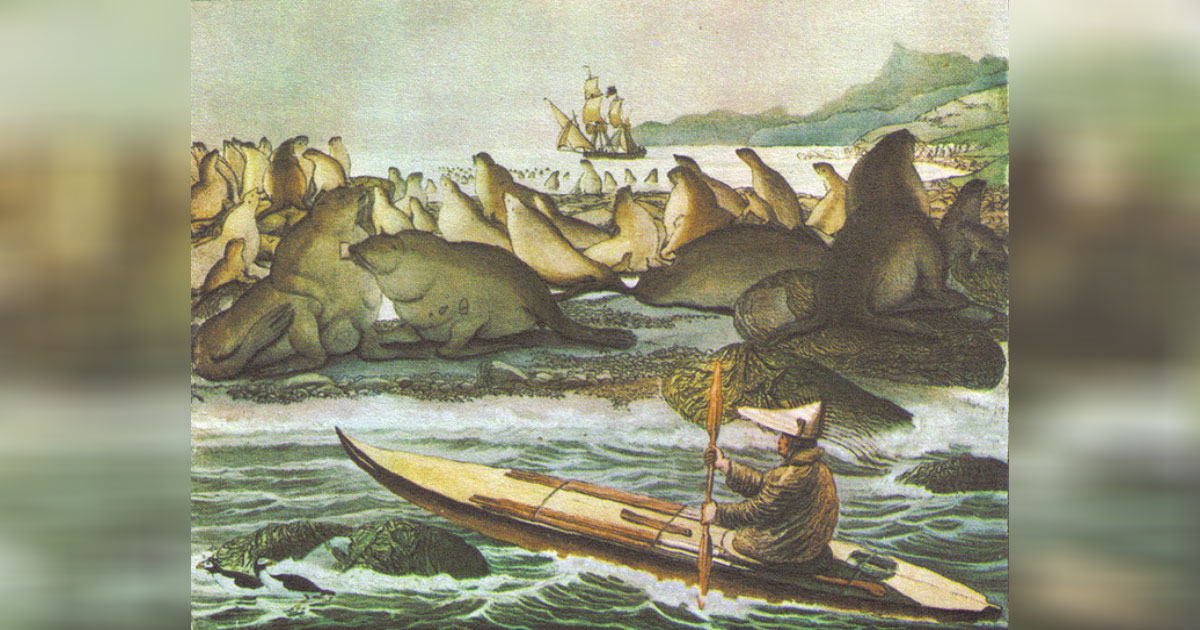Chaluka: A Site so Remote, The Ancient Aleutians of Alaska Lived in Peace for Millennia
Alaska is often referred to as the last frontier because of its unspoiled nature and sparse population. Few people are aware of the long history of the indigenous people of the state and especially that of Aleutian Islanders. Thus, the Chaluka site is of great importance in the study of the Aleuts and the history of the subarctic region. For over 3,000 years people inhabited the site, and today archaeologists go through their trash.
History of Chaluka National Historic Park, Alaska
As a National Historic Landmark, Chaluka is an archaeological site that is now protected by the state and the Federal Government of America and it is also on the National Register of Historic Places. The park consists of an archaeological site on the island of Umnak which is one of the largest islands in the Aleutian archipelago. This windswept island is dominated by Mount Vsevidof and is treeless.

Mount Vsevidof on the island of Umnak, Alaska. (Public Domain)
The Chaluka site is located close to the hamlet of Nikolski, which is not far from the sea and has a population of just 18 people. The Aleutian Islands are approximately 100 miles (160 kilometers) off the south-west coast of Alaska, and they are one of the remotest areas on the globe.
Although abandoned in the late 19th century, this site was continuously inhabited for 3,500 years, which makes it a unique place and explains why it has yielded so many valuable artifacts and insights into the culture and history of the Aleuts. It was first excavated in 1909 and has been the subject of many archaeological digs ever since.
- Reconstructing an Ancient Lethal Weapon
- A Makeshift Casket of Sea Shells and Antlers: The 6500-Year-Old Grave of the Unfortunate Ladies of Téviec
- Ancient Bronze Artifacts in Alaska Reveals Trade with Asia Before Columbus Arrival
The Aleuts and Chaluka
The Chaluka site was most likely occupied by the Aleuts for the entirety of its existence. They are the indigenous people of the islands and they were, and still are, superb fishermen and hunters. It is generally accepted that they settled on the island some 8,000 years ago, but some believe that they migrated to the Aleutian Island much later. There is no agreement on where they originated, some say Siberia, but other scholars state that they came from the Alaskan mainland or the Arctic Circle.
The islanders speak a language that is related to that spoken by the Inuit, but they have very different cultures and ways of life. They developed sustainable societies that adapted well to the harsh environment of the archipelago. Aleuts built villages near the coast and lived in partially underground houses that allowed them to withstand the extreme cold of the subarctic winter.

Nikolski, Umnak Island. (Doyle, T / CC BY 2.0)
The inhabitants’ way of life continued undisturbed for millennia, until the arrival of Russian traders who eventually settled on the island and married into the various tribes of Aleuts. The contact with Europeans disrupted their traditional way of life and also exposed them to disease, which led to a dramatic drop in their numbers. This continued after America purchased Alaska and occupied the islands. Today there are only 2000 pure-blooded Aleuts remaining.
Archaeological and Anthropological Finds at the Chaluka Site
Because the settlement’s buildings were constructed from wood and sod, there is very little to see today at the Chaluka site, despite it being occupied for some 3,500 years. The most important feature of the site today is the midden, a large deposit of waste and garbage built up over three millennia. The midden is a big mound, almost a small hill, built up by layer upon layer of waste. It is 700 feet wide (213 meters) and roughly 200 feet (61 meters) high.
- Preserved in Legends and Ice: What Led to the Extinction of the Dorset Culture?
- Ancient Infant DNA Rewrites the History of Humans Entering North America
- Children of the Upward Sun River: 11,500-Year-Old Remains Shed Light on Alaska’s Earliest Inhabitants
Bones, seashell, and other detritus were the most common find in the midden, but a large number of artifacts such as arrowheads have also been unearthed. The midden has yielded about 4000 items that have enabled archaeologists to understand the material culture of the Aleuts since ancient times. Many of the remains have been carbon-dated and experts have been able to date the site and understand the evolution of the local population.
Human remains have also been found at Chaluka, which is providing further information on the development of the people who once inhabited the area. They have been identified as belonging to Paleo-Aleuts and researchers are determining the origin of the local population and early humans’ migration patterns in this region during the Stone Age.

Illustration of men's and women's dress, Aleutian Islands, ca. 1820. (Public Domain)
Carved images, utensils, and stone knives have been dug from the midden and are similar to artifacts associated with the Dorset culture, a paleo-Eskimo culture (1000-1500 AD). The midden has also revealed evidence that the local people adopted a complex system to preserve resources and to create a sustainable community.
The Challenge of Getting to the Chaluka archaeological site in Alaska
Unfortunately, Aleutian island is extremely difficult to visit. Communication with the outside world is limited and the settlement on the island is in decline. It may be possible to travel to the island by plane, but this could be hugely expensive and there is almost no accommodation near the Chaluka site.
Top Image: Illustration of an Aleut paddling a baidarka, with an anchored Russian ship in the background, near Saint Paul Island, by Louis Choris, 1817. The Chaluka site was inhabited by ancient Aleut people. Source: Public Domain
By Ed Whelan
References
Aigner, J. S. (1976). Early Holocene evidence for the Aleut maritime adaptation. Arctic Anthropology, 32-45. Available at: https://www.jstor.org/stable/40283939
Laughlin, W. S., & Reeder, W. G. (1962). Revision of Aleutian prehistory. Science, 137(3533), 856-857. Available at: http://science.sciencemag.org/content/137/3533/856
Laughlin, W. S. (1983). Eskimos and Aleuts: Their origins and evolution. Science, 142(3593), 633-645. Available at: https://www.jstor.org/stable/1711672?seq=1#page_scan_tab_contents




















Comments
The midden has also revealed evidence that the local people adopted a complex system to preserve resources and to create a sustainable community.
The above statement is complete and utter nonsense. No such evidence is provided and nothing but a figment of the writer's imagination. The much used but completely disproved "noble savage" concept.